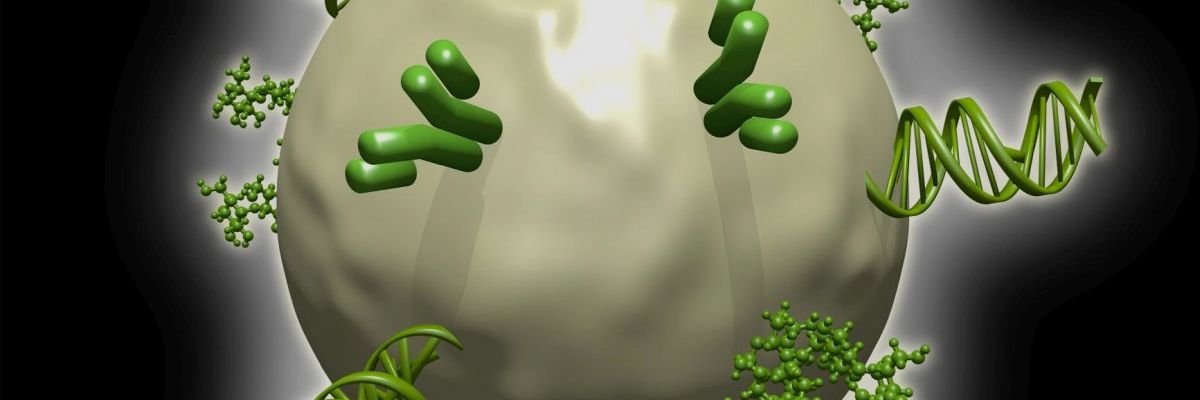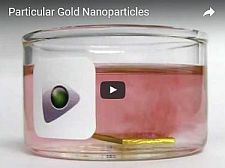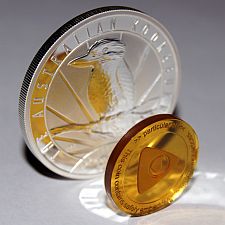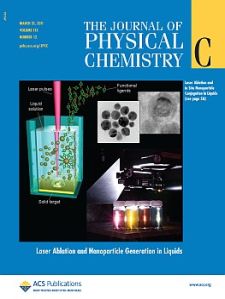Technology:
Laser ablation in liquids
The secret of our nanomaterials lies in their generation process: Nanoparticles by Particular® are not chemically synthesized, but result from a physical laser ablation - our raw material is not a chemical precursor, but solid bulk material. This leads to a high quality and best conditions for immediate post-processing.

Nanotechnology has provided new solutions in many social fields. It will contribute to a world-wide reduction of energy and material consumption and help single humans by means of new diagnosis and therapy tools.
Particular is involved in the field of nanoparticles. These sub-microscopic "material nuggets" unfold special effects due to their large ratio of surface atoms. Half of all nanotechnology efforts world-wide are based on nanoparticles. They can be mixed with material, attached to surfaces, or used as single functional units that bind to biomolecules. With a new production method for nanoparticles, Particular contributes to a future in which everybody will benefit from even more nano-products.
Process
 Our process video demonstrates the basic principle at the example of laser ablation of gold nanoparticles in an open vessel filled with water and a contained gold plate. The nanoparticles generated by laser irradiation from above lead to a red coloring, resulting from an optical effect at the surface of gold nanoparticles that absorbs green light. Please also see our video on the material variety of the laser process, demonstrating the same process on different materials.
Our process video demonstrates the basic principle at the example of laser ablation of gold nanoparticles in an open vessel filled with water and a contained gold plate. The nanoparticles generated by laser irradiation from above lead to a red coloring, resulting from an optical effect at the surface of gold nanoparticles that absorbs green light. Please also see our video on the material variety of the laser process, demonstrating the same process on different materials.
For production, Particular usually applies different kinds of closed ablation chambers to fulfil varying requirements on nanoparticle dispersions. Thanks to high-power laser systems and flow chambers, the process can be applied continuously.
Small amounts of these colloids are available from our partner STREM Chemicals. If you require large amounts (in the gram or muliti-liter range) on a regular basis, you may want to contact us directly.
Advantages
 Due to its physical approach, laser ablation in liquids is generally different from chemical syntheses. Avoiding chemical precursors is useful for nanotechnology, as high purity is often required - for example in biological or medical applications or when a polymer is to be filled with nanoparticles without impurifying the matrix.
Due to its physical approach, laser ablation in liquids is generally different from chemical syntheses. Avoiding chemical precursors is useful for nanotechnology, as high purity is often required - for example in biological or medical applications or when a polymer is to be filled with nanoparticles without impurifying the matrix.
Nanoparticles from Particular offer the following advantages:
- high purity of the colloids without left over precursors or byproducts,
- long durability due to electrostatic and optionally sterical stabilization,
- organic solvents as possible direct dispersants without medium transfer.
Examples of unique applications enabled by Particular's method:
- adsorption of catalytic nanoparticles to microparticle supports with nanoparticle loads up to 10 wt% and more at constant particle sizes,
- gold nanomarkers that are lasting and biocompatible (instead of bleaching fluorophores or toxic quantum dots),
- nano-coatings from the same material as the workpiece to avoid additional material qualifications during product approvals,
- volume embedding of metal nanoparticles in polymers for longer effectiveness than that of coatings (ion release capacities up to several years),
- nanoparticle mixtures for coatings and volume embedding with adjustable function combinations.
Publications
- Zhang, D.; Goekce, B.; Barcikowski, S.: Laser Synthesis and Processing of Colloids: Fundamentals and Applications. In: Chemical Reviews 117 (2017); DOI: 10.1021/acs.chemrev.6b00468
A selection of further publications on laser-ablated nanomaterial:

- Barcikowski, S.; Mafuné, F. (Guest Editors): Laser Ablation and Nanoparticle Generation in Liquids. Journal of Physical Chemistry (Special Issue) C 115 (2011) 12, 4985-5180.
- Neumeister, A.; Jakobi, J.; Rehbock, C.; Moysig, J.; Barcikowski, S.: Monophasic ligand-free alloy nanoparticle synthesis determinants during pulsed laser ablation of bulk alloy and consolidated microparticles in water. In: Physical Chemistry Chemical Physics 16 (2014) 43, 23671-23678
- Marzun, G.; Streich, C.; Jendrzej, S.; Barcikowski, S.; Wagener, P.: Adsorption of Colloidal Platinum Nanoparticles to Supports: Charge Transfer and Effects of Electrostatic and Steric Interactions. In: Langmuir 30 (2014) 40, 11928-11939
- Gu, S.; Kaiser, J.; Marzun, G.; Ott, A.; Lu, Y.; Ballauff, M.; Zaccone, A.; Barcikowski, S.; Wagener, P.: Ligand-free Gold Nanoparticles as a Reference Material for Kinetic Modelling of Catalytic Reduction of 4-Nitrophenol. In: Catalysis Letters 145 (2015) 5, 1105-1112
- Dong, W.; Reichenberger, S.; Chu, S.; Weide, P.; Ruland, H.; Barcikowski, S.; Wagener, P.; Muhler, M.: The effect of the Au loading on the liquid-phase aerobic oxidation of ethanol over Au/TiO2 catalysts prepared by pulsed laser ablation. In: Journal of Catalysis 330 (2015), 497-506
- Streich, C.; Akkari, L.; Decker, C.; Bormann, J.; Rehbock, C.; Mueller-Schiffmann, A.; Niemeyer, F. C.; Nagel-Steger, L.; Willbold, D.; Sacca, B.; Korth, C.; Schrader, T.; Barcikowski, S.: Characterizing the Effect of Multivalent Conjugates Composed of Aß-Specific Ligands and Metal Nanoparticles on Neurotoxic Fibrillar Aggregation. In: ACS Nano 10 (2016), 7582-7597
- Kalus M-R.; Rehbock C.; Bärsch N.; Barcikowski S.: Colloids created by light: Laser-generated nanoparticles for applications in biology and medicine. In: Materials Today: Proceedings (2016)
- Lau, M.; Reichenberger, S.; Haxhiaj, I.; Barcikowski, S.; Müller, A. M.: Mechanism of Laser-Induced Bulk and Surface Defect Generation in ZnO and TiO2 Nanoparticles: Effect on Photoelectrochemical Performance. In: ACS Applied Energy Materials 1 (2018) 10, 5366–5385
- Kamp, M.; Tymoczko, A.; Schürmann, U.; Jakobi, J.; Rehbock, C.; Rätzke, K.; Barcikowski, S.; Kienle, L.: Temperature-Dependent Ultrastructure Transformation of Au–Fe Nanoparticles Investigated by in Situ Scanning Transmission Electron Microscopy. In: Crystal Growth Design 18 (2018) 9, 5434–5440
- Streubel, R.; Barcikowski, S.; Goekce, B.: Continuous multigram nanoparticle synthesis by high-power, high-repetition-rate ultrafast laser ablation in liquids. In: Optics Letters 41 (2016) 7, 1486-1489
- Reichenberger, S.; Marzun, G.; Muhler, M.; Barcikowski, S.: Perspective of Surfactant-Free Colloidal Nanoparticles in Heterogeneous Catalysis. In: ChemCatChem 11 (2019) 18, 4489-4518
- Kanitz, A.; Kalus, M.-R.; Gurevich, E.-L.; Ostendorf, A.; Barcikowski, S.; Amans, D.: Review on experimental and theoretical investigations of the early stage, femtoseconds to microseconds processes during laser ablation in liquid-phase for the synthesis of colloidal nanoparticles. In: Plasma Sources Science and Technology 28 (2019) 10
- Hupfeld, T.; Laurens, G.; Merabia, S.; Barcikowski, S.; Gökce, B.; Amans, D.: Dynamics of laser-induced cavitation bubbles at a solid–liquid interface in high viscosity and high capillary number regimes. In: Journal of Applied Physics 127 (2020), 044306
- Amendola, V.; Amans, D.; Ishikawa, Y.; Koshizaki, N.; Scirè, S.; Compagnini, G.; Reichenberger, S.; Barcikowski, S.: Room-temperature laser synthesis in liquid of oxide, metal-oxide core-shells and doped oxide nanoparticles. In: Chemistry A European Journal, Accepted Author Manuscript. DOI:10.1002/chem.202000686
- Nadarajah, R.; Barcikowski, S.; Gökce, B.: Picosecond laser-induced surface structures on alloys in liquids and their influence on nanoparticle productivity during laser ablation. In: Optics Express Vol. 28 (2020) 3, 2909-2924